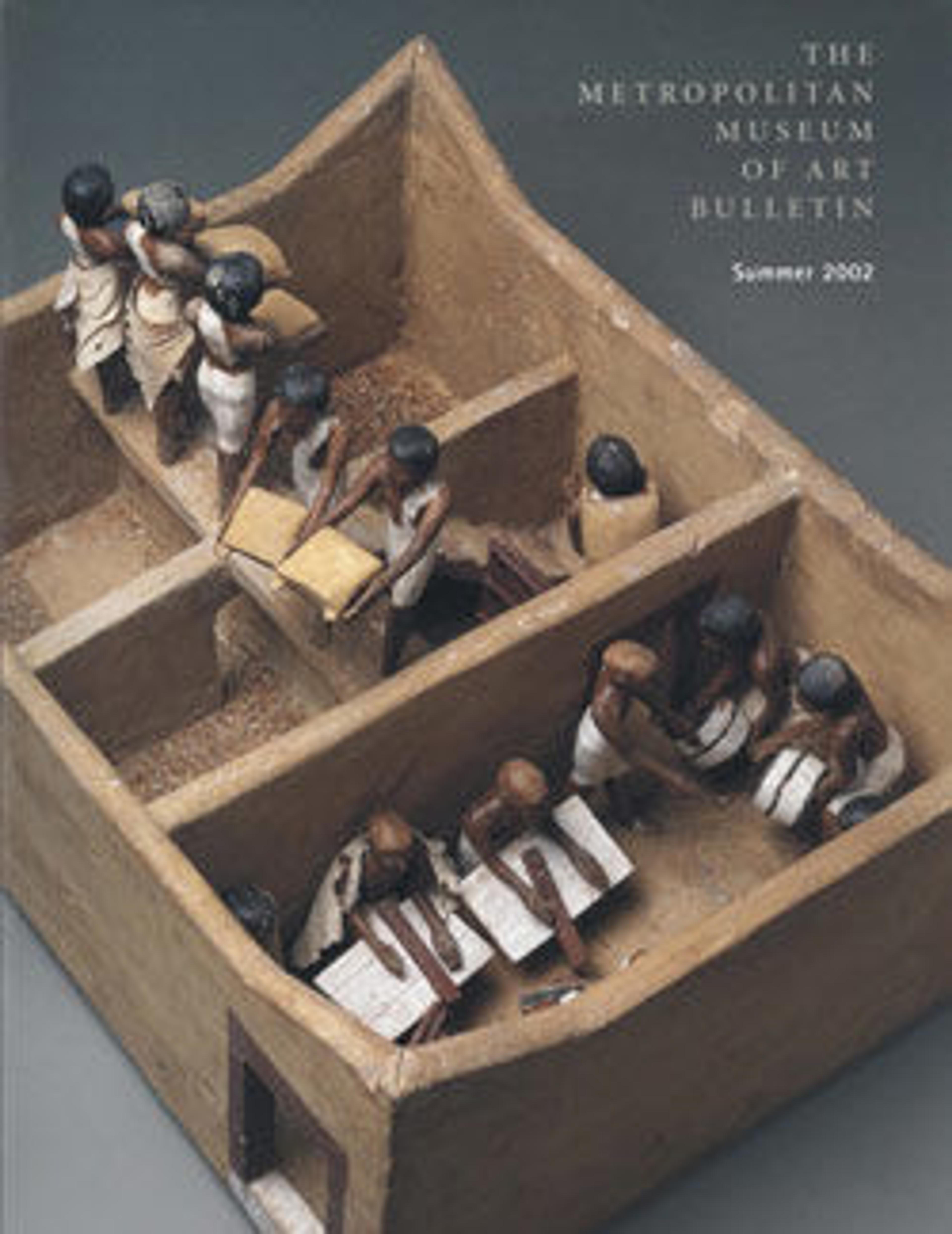Marsh-Bowl
Shallow open bowls made of faience were popular in the early Eighteenth Dynasty as temple offerings and tomb furnishings. On the outside, the bowls are almost invariably decorated with the petals and sepals of the blue lotus. The flower of the blue lotus opens in the morning and closes at night making it a powerful symbol of regeneration, a common theme in Egyptian art. On the inside, many bowls, have aquatic motifs, like this one. Here, there are eight fully open lotus blossoms and eight buds, their stems growing from a rectangular pool in the center. The bowl was found in the tomb of Hatnefer inside one of the subsidiary coffins. This coffin contained the mummies of two women and two young children. The bowl had been placed at the foot end of the coffin with a number of other objects now in the Museum's collection. These include two faience dishes, a circular wood box, two mirrors, and five cowrie-shaped amulets.
For a bowl of the same type, but decorated in a very different style, click here.
For a bowl of the same type, but decorated in a very different style, click here.
Artwork Details
- Title:Marsh-Bowl
- Period:New Kingdom
- Dynasty:Dynasty 18, early
- Reign:reign of Thutmose II–Early Joint reign
- Date:ca. 1492–1473 B.C.
- Geography:From Egypt, Upper Egypt, Thebes, Sheikh Abd el-Qurna, Tomb of Hatnefer and Ramose (below TT 71), coffin III, MMA excavations, 1935–36
- Medium:Faience, paint
- Dimensions:H. 6.7 cm (2 5/8 in.); Diam. 18 cm (7 1/16 in.); Th. 0.6 cm (1/4 in.)
- Credit Line:Rogers Fund, 1936
- Object Number:36.3.8
- Curatorial Department: Egyptian Art
More Artwork
Research Resources
The Met provides unparalleled resources for research and welcomes an international community of students and scholars. The Met's Open Access API is where creators and researchers can connect to the The Met collection. Open Access data and public domain images are available for unrestricted commercial and noncommercial use without permission or fee.
To request images under copyright and other restrictions, please use this Image Request form.
Feedback
We continue to research and examine historical and cultural context for objects in The Met collection. If you have comments or questions about this object record, please contact us using the form below. The Museum looks forward to receiving your comments.
